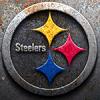In the ULS systems driver, they use the term image density as the equivelent of the DPI (lines per inch). They use a slider bar with settings of 1 through 6 for DPI. Then you have a seperate control to set PPI.
In the Epilog driver, you can set your DPI, which is shown as equal (300 X 300 or 600 X 600) but you can also set the "rate" to help shape the pulse.
I believe pulse shaping is what most people are trying to do when changing the PPI or rate setting on their machines. (Oh boy, I'm not sure I have time to get too far into pulse shaping.) But basically, using a 25 watt CO2 laser, you will not get more average power than what the laser will output. So if you turn your laser on and it stays on for a second, it will only output 25 watts. Now, if you turn your PPI down, the shape of the pulse energy will start out very high, say 150 watts, but will drop off very quickly towards the end of the pulse. Over the duration of that pulse, you will still only have 25 watts of power. And if you turn you PPI up, the energy will be very even duing the duration of that pulse.
So if you are having trouble getting through a certain material, turning the PPI number down, might allow the laser beam to pierce the material with the initial blast of energy, and allow the material to cool or simmer as the energy level drops down towards the end of the pulse. As long as the PPI allows the beam to overlap, you should not see excessive striations.
On the other hand, you are cutting through something and you are getting a "raggedy" edge, turning up the PPI rate might smooth out the edge of the cut material.
(Sorry. I usually confuse myself with all this deep thinking. I am even worse on the golf course.

)




 Reply With Quote
Reply With Quote






 )
)
